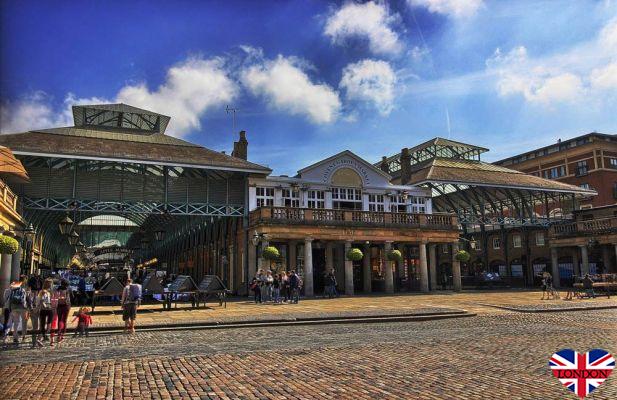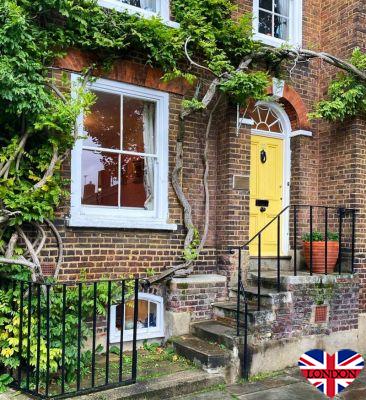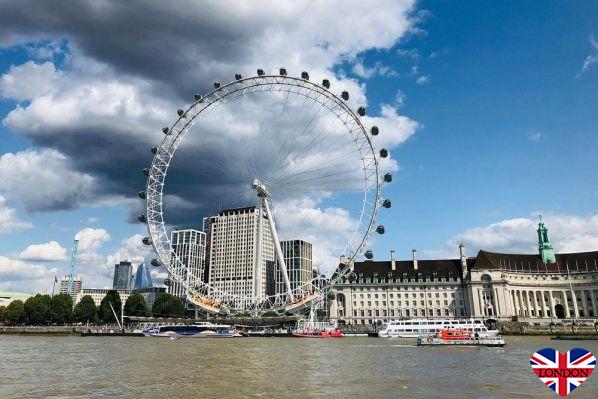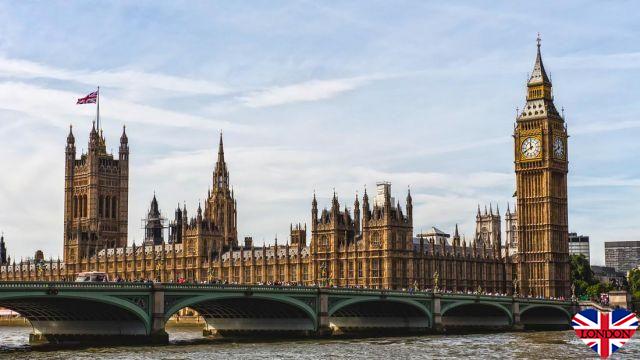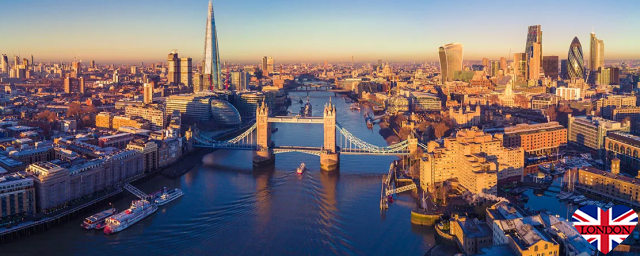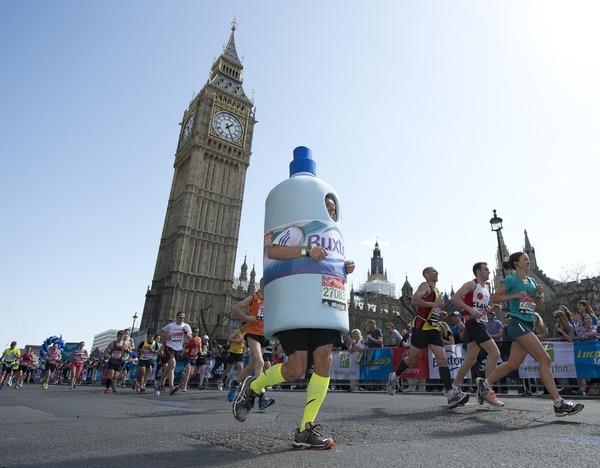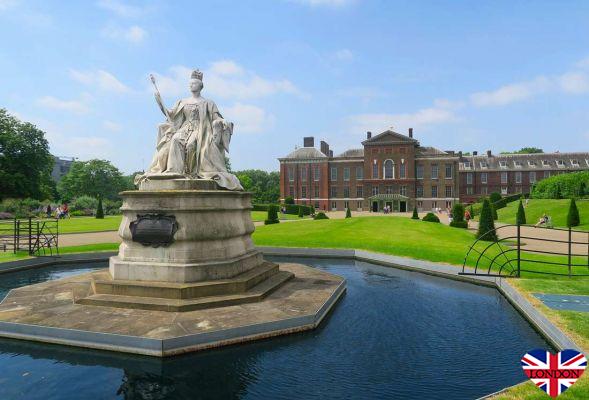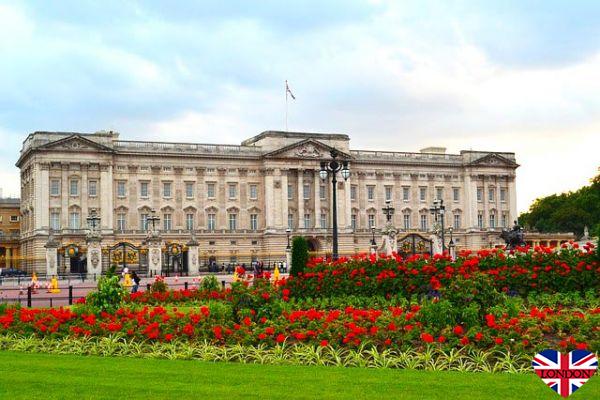
Think London is too big? Well, you're not far wrong. This city has ten different boroughs to get lost in. But don't get overwhelmed, at ForLondresLovers we've put together a list of all the must-see neighbourhoods in London.
The different boroughs of London
London is made up of 33 boroughs: 32 boroughs and the City. Here we tell you about the most important ones.
Whitehall and Westminster
The area has been, for over a thousand years, the centre of political and spiritual power in England. Therefore, it offers a great cultural and artistic heritage, which is rare in other areas of the city. Its streets are crossed every day by a large number of workers, as there are several administrative offices here. In the north, Trafalgar Square marks the beginning of the West End, the district with an interesting nightlife.
Not to be missed is a visit to Big Ben, Westminster Abbey, the Houses of Parliament and Westminster Cathedral.
Piccadilly and St James's
It is the main thoroughfare of the West End. In the 18th century it was surrounded by royal residences and was a favourite shopping district for courtiers. Mayfair, in the north, is the most elegant area of London. Piccadilly Circus marks the beginning of Soho.
Soho and Trafalgar Square
Created at the end of the 17th century, in its first hundred years it was the most elegant area of London. Artists and intellectuals frequented its pubs and informal clubs. Today it is the most liberal and multicultural area of the city. Here is Chinatown, its Chinatown.
Covent Garden and Strand
It is one of the most vital areas of London. The main tourist attractions are its outdoor bars, street performers, luxury shops and markets. At the heart of Covent Garden is its square designed in 1630 by Inigo Jones. In Covent Garden, don't miss the square and the market!
Bloomsbury and Fitzrovia
This area is home to artists and writers. You'll find many libraries here. Bloomsbury is also home to the University of London, the British Museum and several Georgian squares - don't miss the chance to see the British Museum and Russel Square!
Holborn and Inns of Court
A neighbourhood frequented by lawyers and journalists, this is legal London! The area is home to the Royal Courts of Justice and the Inns of Court. Lincoln's Inn is a place full of history. It preserves buildings from the 15th century and many survivors of the great fire of 1666. In the past it was an area of great importance for local commerce.
The Town
Although its full name is "The City of London", it is known as "The City". It is the financial district of London, home to the Stock Exchange and the Bank of England, with intense activity throughout the day. It occupies the area of the Roman settlement. After the great fire of 1666, which destroyed most of the original city, Christopher Wren oversaw the reconstruction of 52 churches.
In the 19th century, many people lived in the City, whereas today it has lost its connotation as a residential area. In the City we find an eclectic architectural style, characterized by the urban amalgamation of modern structures (offices or banks) with Victorian style buildings.
The main points of interest in the area are St. Paul's Cathedral, the Tower of London and Tower Bridge.
Smithfield and Spitalfields
It is one of the oldest areas of London. Located north of the City, it was an area of refuge for those who were not well received in that area. In the 17th century Huguenots and other immigrants from Europe and Bengal settled here and later built factories and introduced their own cuisine and religion to the area.
Here you'll find one of the oldest churches in the capital, some Jacobean finds, the remains of the Roman wall and the only wholesale food market in the city centre.
Southwark and Bankside
From the Middle Ages until the 18th century, Southwark was a more than popular area, mainly because it was excluded from the jurisdiction of the city, where many entertainments were banned. Southwark was a great escape for lovers of idleness and entertainment. The Globe Theatre, later rebuilt near its original location, housed Shakespeare's company. In this area were built docks, warehouses and farms between the eighteenth and nineteenth centuries. Today it is one of London's most vibrant neighbourhoods.
South Bank
This area was damaged by bombing during the Second World War. In 1951 it was chosen as the venue for the Festival of Britain to mark the centenary of the Great Exhibition. The only building from 1951 that exists today is the Royal Festival Hall.
On the South Bank is the London Eye, the famous London notary's office.
Chelsea
In Tudor times, a small town near the banks of the river, Chelsea, became a fashionable place. Henry VIII had a palace built there, now disappeared. Thomas Moore lived here. Many artists were attracted by the panoramic views of the river that could be seen from Cheyne Walk . In the 18th century, its gardens were filled with charming courtesans and, for a century, the Chelsea Arts Club held scandalous balls. In the 19th century it was populated by artists and intellectuals. Today it is a very expensive area that many artists cannot afford. However, it maintains its connection to the art world thanks to its art galleries and antique dealers in the area.
South Kensington and Knightsbridge
These areas are among the most elegant in London and are home to numerous embassies and several consulates. Thanks to its proximity to Kensington Palace, this area was able to retain its original appearance. Knightsbridge is home to mostly wealthy people and therefore only luxury shops can be found here. It is an important cultural district due to the presence of renowned museums and university centres.
Here you will find some of London's most important sights: Kensington Palace, the Royal Albert Hall, the Albert Memorial, the Victoria and Albert Museum, the Natural History Museum, the Science Museum and Hyde Park.
Kensington and Holland Park
Until 1830 the area consisted of a small rural village with markets and mansions. Its famous Holland House, whose lands now constitute Holland Park. Most of its buildings were built in the 19th century with magnificent Victorian rooms, only two of which can be visited. The west and north sides of Kensington Gardens form a luxurious residential area where several embassies are located. Its shops are almost as expensive as those in Knightsbridge.
The main street, Queensway, is a meeting place for the presence of nightclubs and bars. Among the main points of interest in the area are Portobello Market, Nothing Hill and Holland Park.
Regent's Park and Marylebone
Marylebone, an ancient medieval village south of Regent's Park, retains the largest number of Georgian mansions in the capital. Until the 8th century it was surrounded by fields and gardens. In the 19th century the area was largely occupied by doctors and so today it retains its medical tradition and renowned elegance.
Greenwich and Blackheath
Greenwich is known to be the area where the zero point of the meridian is located. This district is home to the National Maritime Museum.
In Tudor times, a royal palace was built, of which only the Queen's House remains, built by Inigo Jones for James I's wife. In Greenwich there are several museums, bookshops, antique shops, markets and a park.



